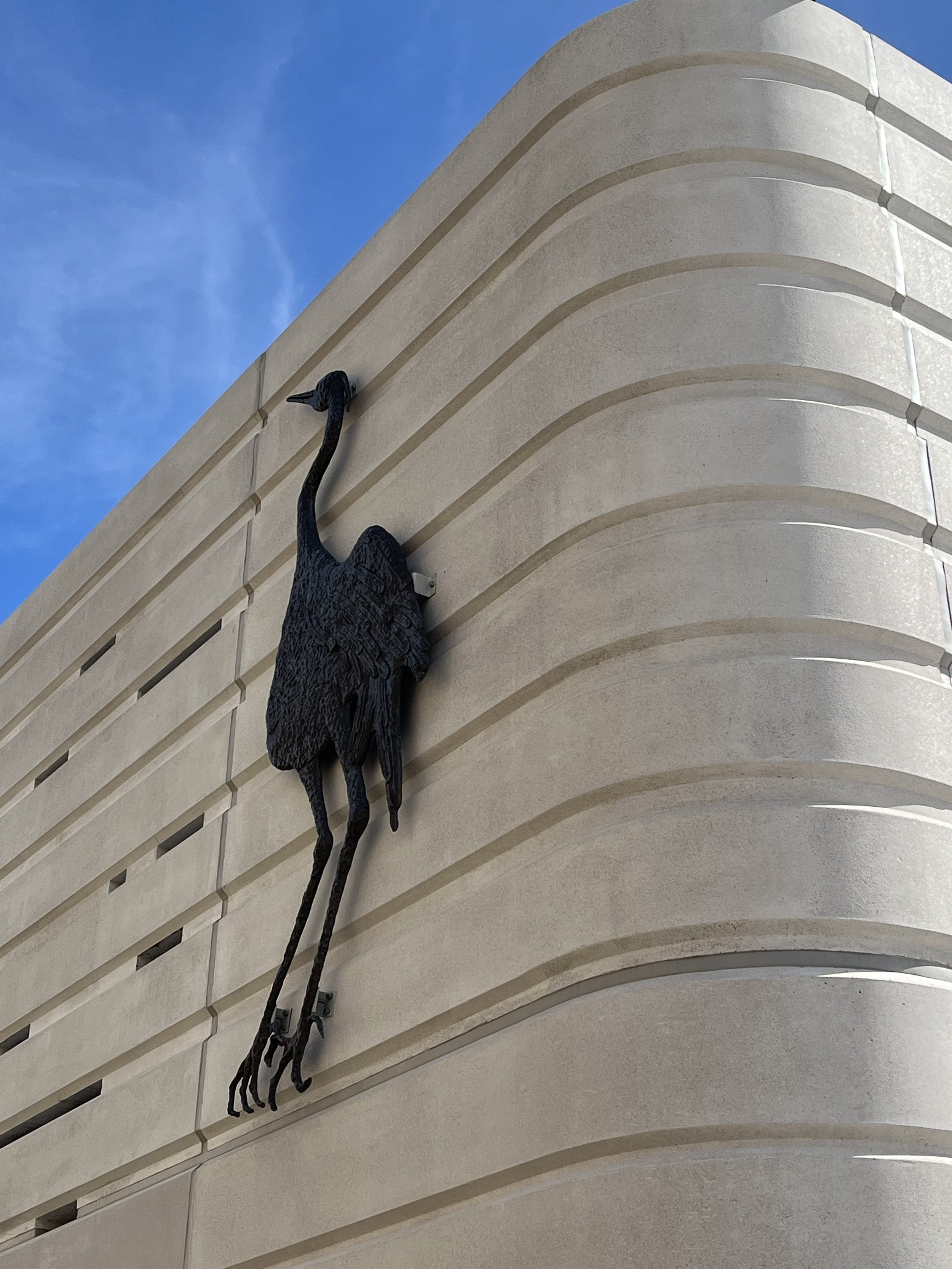Carnwath Riverside, Carnwath Road, London
Carnwath Riverside, Carnwath Road, London: Standing Heron and Heron In Flight, Sarah Staton
Year
2024
Client
fereday pollard for Tideway
Artist
Sarah Staton
Service
Commission Management
Location
Carnwath Road, Fulham, London SW6 3HR
A permanent commission for Carnwath Riverside
Sarah Staton was commissioned by Tideway to create two cast bronze sculptures for Carnwath Riverside, a new pocket park along the riverside in South Fulham. The site was opened to the public on the 31 March.
The permanent Tideway commissions respond to the site-specific narratives set out in the Tideway Heritage Interpretation Strategy (HIS). The cultural meander for the West section is – ‘Recreation to Industry: Society in Transition’. Sarah researched the site’s history, exploring Tideway’s Heritage Interpretation Strategy (HIS), which for the West section of the tunnel is themed around ‘Recreation to Industry: Society in Transition’. The site-specific history of Carwath Riverside identifies a trajectory from the low-lying riverside common land becoming private land, giving over to industry, and returning again to a new public space.
In 1824, twenty acres of land at Sands End, a little to the east of Carnwath Road, was bought by the Imperial Gas Light and Coke Company, the first public utility enterprise in the world. It initiated almost two centuries of industrialisation and manufacturing in the area. Craftspeople and artists were attracted to its fringes, most notably, William De Morgan, a friend of William Morris and a member of the Arts and Crafts movement. The De Morgan Pottery at Sands End, Fulham, operated between 1888 and 1897 and is best known for its production of tiles, which featured decorative floral and animal designs in vivid colours and were influenced by Middle Eastern Art.
Sarah conceived the two-part artwork Standing Heron and Heron in Flight in celebration of the beautiful herons that can be seen flying upstream or wandering here on the foreshore. The artist was delighted to discover that the heron features as a recurring motif on 19th-century de Morgan ceramics. One bird is placed at the river end of the site, and the other, is directly visible when approaching the site from Carnwath Road.
For more information on the site’s history see Tideway’s Heritage Interpretation Strategy.
“I was delighted to discover that the heron is also to be found as motif on 19th Century De Morgan ceramics created at nearby Sands End.”
The artist has said:
Tideway's Carnwath Riverside site sits on the north bank of the River Thames, to the west of Wandsworth Bridge. At low tide, you may well see a heron here; outside of the breeding season, they like to spend their time alone, feeding in the damp or wading in shallow water. Birds and fish connect us to prehistory, I love the way that these creatures have evolved to move swiftly through air and water. The sculptures at Carnwath Riverside, sit in a rich lineage of heron iconography – they were celebrated and immortalised previously by William de Morgan, who worked close by at his Sands Works Ceramic Studio, it's been an honour to create two 21st-century herons to adorn the new riverside park. Keeping close to the river is an occurring motif here, as herons were modelled and cast close by at Arch Bronze in Putney – originally the workplace of the French sculptor Henri Gaudier-Brzeska.
See the film for when the work was in development.
See the press release for the site opening event here.
Cast by Arch Bronze, installed by Sorba who was commissioned by BMB JV (Morgan Sindall and Balfour Beatty), the main work contractor for the west sites.
“The water-loving heron, with its enticing prehistoric origins, feels like the perfect sculptural celebratory motif for the new Thames-side public park.”
Sarah Staton creates materially rich interdisciplinary work that embraces context, history and social potentials. She has exhibited extensively in museums and galleries in the UK and internationally. She has been the recipient of awards including Henry Moore Foundation, Henry Moore Institute, The Arts Foundation, The Landscape Institute, New York Type Directors Award. Staton’s commissioned sculptures for specific sites include Apples and Pears, Westminster, London, Edith and Hans for University of Bristol, Alphonse for Milton Keynes and Octavia for the Crucible Theatre Sheffield.
Her work is in the permanent collection of the Arts Council England, The British Museum, Folkestone Artworks, Tate Gallery and in private collections in Europe and North America. Sarah is Head of Sculpture at the Royal College of Art, London.
For more information see: https://sarahstaton.com
For more information see:
www.tideway.london













